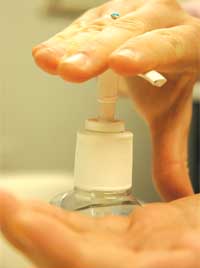In anesthesia there are markers to predict or at least suggest it may be difficult to place a breathing tube in someone. These include mouth opening, dentition, mallampatti score, which assesses the favorablity of the anatomy of the oral cavity (i.e. mouth), hyoid to mentum distance (essentially chin size), neck thickness/anatomy, neck extension and flexion. No one predictor predicts a difficult intubation, but together they form a picture of how easy or difficult you think it might be.
Someone with very limited neck movement would be very difficult to visualize the vocal cords generally, so I was worried a bit in this case. Apparently he had had two surgeries in the past six months with no problems and the anesthesiologists had not told him anything about his airway. So just to be sure I requested the anesthesia record from the other hospital.
It was your standard anesthesia record, with lots of checkboxes for standard things that you do in the operating room.
whoa.... wait a minute. it was an easy intubation, but he/she wasn't able to visualize the vocal cords?
So now I flip through the rest of the records... no note about the airway at all, or being difficult or anything. I have to now doubt the accuracy of this whole chart now.... How can I trust that he was a easy mask ventition if she/he was willing to describe the blind intubation is easy.
Enough to drive you crazy.

